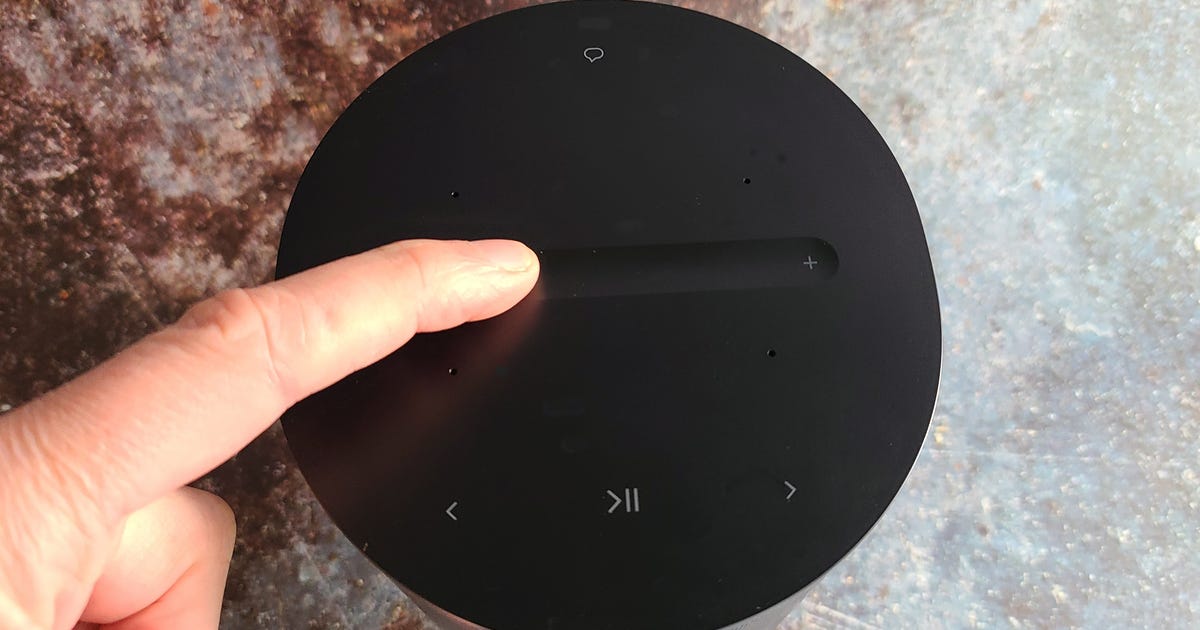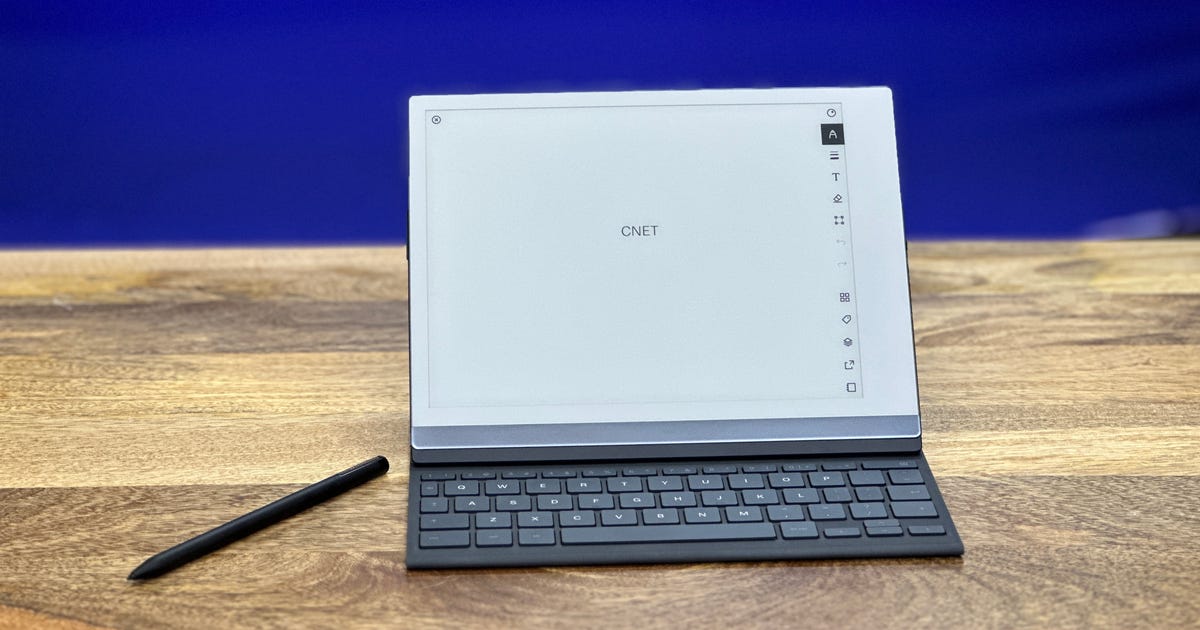Check Also
The US Is About to Exit a Long Dark Age of Lousy Headlights
[dzs_video source=”https://cnet.redvideo.io/2022/09/16/49769be8-2384-4b14-9e21-dd7391f645d1/adaptive-headlights-4kfinal_720h3200k.mp4″ cover=”https://www.cnet.com/a/img/resize/ddcd07e4d9afd5a49c8fdd756e1fb3514818d952/hub/2022/09/16/eeb958f1-4ba5-41ed-9dee-49607cb78be6/mazda-i-activsense-adaptive-led-headlamps-alh-mp4-00-01-04-10-still001.jpg?auto=webp&fit=cover&height=482&width=856″ config=”skinauroradefault” width=”100%” height=”600″ logo=”https://joggingvideo.com/wp-content/uploads/tdn_pic_2.png” config=”skinauroradefault” autoplay=”off” cue=”on” loop=”off” type=”video” logo=”0000″ logo_link=”5555″ responsive_ratio=”default” …
Next
Check Also
The US Is About to Exit a Long Dark Age of Lousy Headlights
[dzs_video source=”https://cnet.redvideo.io/2022/09/16/49769be8-2384-4b14-9e21-dd7391f645d1/adaptive-headlights-4kfinal_720h3200k.mp4″ cover=”https://www.cnet.com/a/img/resize/ddcd07e4d9afd5a49c8fdd756e1fb3514818d952/hub/2022/09/16/eeb958f1-4ba5-41ed-9dee-49607cb78be6/mazda-i-activsense-adaptive-led-headlamps-alh-mp4-00-01-04-10-still001.jpg?auto=webp&fit=cover&height=482&width=856″ config=”skinauroradefault” width=”100%” height=”600″ logo=”https://joggingvideo.com/wp-content/uploads/tdn_pic_2.png” config=”skinauroradefault” autoplay=”off” cue=”on” loop=”off” type=”video” logo=”0000″ logo_link=”5555″ responsive_ratio=”default” …
Next
Production on the next-generation processor that will power new iPhones launching later this year has reportedly already begun.
Apple manufacturing partner Taiwan Semiconductor Manufacturing has begun producing what is expected to be called the A12 chip, sources tell Bloomberg. The chip’s 7-nanometer design is said to make it faster and more efficient than the 10-nanometer chips found in current Apple devices.
The chip could help Apple’s devices run apps faster and operate longer between charges — giving the iPhone maker an advantage in a competitive market that has experienced stagnant demand for new handsets. A lack of new hardware design innovation, along with longer replacement rates and diminishing carrier subsidies, have been blamed for the cooling.
Apple managed to grow its global smartphone market share in the first quarter of 2018 despite a market that experienced an overall decline in shipments. Apple hopes it can continue that trend with the 7-nanometer chip, but it’s not alone. Samsung said Tuesday it’ll start building chips with a 7-nanometer process employing extreme ultraviolet lithography, a process that permits smaller features to be etched onto the silicon wafers that are the substrate for chip features.
Apple didn’t immediately respond to a request for comment.
Cambridge Analytica: Everything you need to know about Facebook’s data mining scandal.
iHate: CNET looks at how intolerance is taking over the internet.
Check Also
8 New Google Products We Expect to See This Year
Google’s device line could end up having a particularly important moment in 2023. The company …
Next
If the first generation of the Apple Watch wasn’t quite to your liking, perhaps a second generation next year would do the trick.
That next version of the Apple smartwatch is in the development stage, according to a report on a Chinese media site. The report pointed to statements this week at an investor’s meeting in France by Barry Lam, chairman of Taiwan’s Quanta Computer, which manufactures the Apple Watch.
The brief write-up didn’t detail any specific changes coming to the Apple Watch. It simply relayed Lam’s expectation that next year’s version would be better than this year’s, offering “fully upgraded hardware and software.”
Previous reports have also claimed a second edition of the watch may roll out next year.
The Apple Watch, the debut wearable from the maker of the iPhone, first hit store shelves in April of this year. Market researcher Canalys estimates that Apple to date has shipped nearly 7 million smartwatches, far more than any of its rivals including Samsung, Motorola and LG.
Like any first-generation product, the Apple Watch comes with certain limitations. In this case, it’s the inability to fully function without a paired smartphone. A second-generation model that bypasses such limitations and improves the size, battery life and other key features would likely boost sales and open up the fledgling smartwatch market even further.
Apple has already been working to to enhance the Watch’s appeal. In September, it added new colors and band styles and released WatchOS 2, the second version of the software that powers the device. The software update brought the ability to run certain apps directly on the watch without need for a smartphone, along with new watch faces and a “time travel” mode to scroll forward and backward through your appointments and events.
Meanwhile, Google has been tuning up Android Wear, its software for smartwatches. On Wednesday, it announced that Android Wear devices starting with the LG Watch Urbane 2nd Edition LTE would now support cellular connections, meaning that even without a phone nearby the watch will still be to send and receive messages, track your fitness and perform other tasks.
Neither Apple nor Quanta Computer immediately responded to CNET’s request for comment.
(Via G for Games)
Check Also
8 New Google Products We Expect to See This Year
Google’s device line could end up having a particularly important moment in 2023. The company …
Next
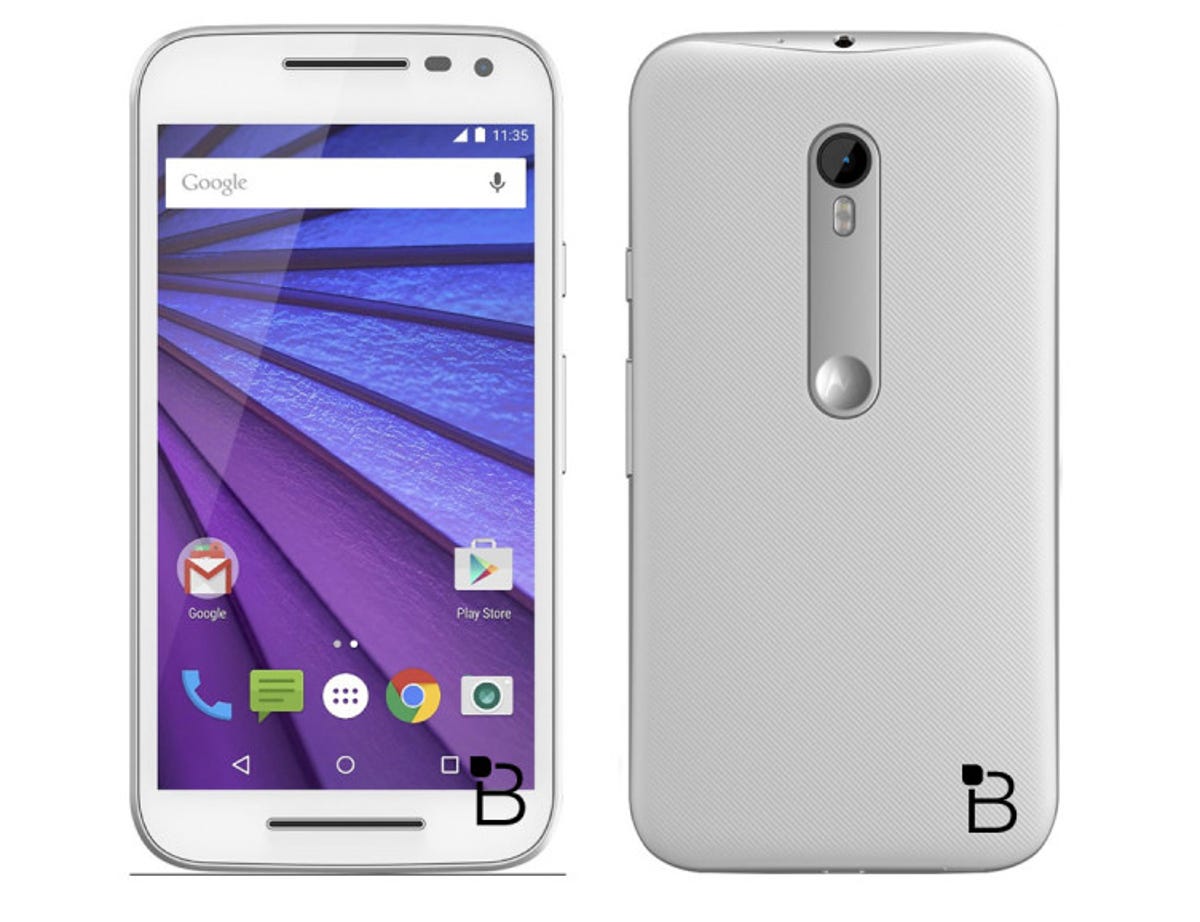
TechnoBuffalo
It’s that time of year again, where the Motorola leaks should start coming fast and furious. Tuesday, for instance, finds us looking at alleged press renders for the next-generation Moto G .
Related Links
- Moto G (2015) review
- Get a no-contract Motorola Moto G for $13.99
- Smartphones with seriously long battery life
Obtained by TechnoBuffalo, the new images show a device that doesn’t stray too far from its predecessors. From the front, at least, the phone looks nearly identical to the current model. An alleged render of the rear shows a hint of newness: a different finish on the back and a detail that joins the typical Moto dimple to the camera module.
What’s inside the next take on the Moto G is also rumored to play a familiar tune, with a 5-inch 1,280×720 display and a 13-megapixel/5-megapixel camera combo.
Reportedly, the handset could also pack a Snapdragon 410 processor with 8GB of storage and 1GB of RAM. And, of course, there’s also support for 4G LTE connectivity.
Presumably, Motorola preloads the phone with the latest version of Android
. My gut tells me the handset could beat the official release of Android M to market, making it an Android
5.0 device that would probably be among the first to score an update, given Motorola’s timely track record.
The last few years have seen Motorola’s key device announcements arriving in late summer. If Moto follows the same pattern, we should also get refreshes to the Moto X and Moto 360 smartwatch at the same time.
Check Also
8 New Google Products We Expect to See This Year
Google’s device line could end up having a particularly important moment in 2023. The company …
Next
This story is part of WWDC 2022, CNET’s complete coverage from and about Apple’s annual developers conference.

Apple
Apple’s answer to an increasingly solicitous Google Now is a more skillful Siri of its own.
At the company’s Worldwide Developer Conference (WWDC) on Monday, Apple introduced a more advanced version of Siri for iOS 9 that comes with “proactive” personal assistant features — like prompting you to resume a podcast you paused, or suggesting calendar events based on the content of your emails.


CNET
Some overlap exists between the new capabilities in Google’s Now on Tap for Android M and Apple’s extended Siri, but there are differences as well. Mainly, the two battle to be the best at giving you the most relevant shortcut to the thing you want to do or know: background info on a TV show, weather advisories, reminders before you knew you wanted to set one.
There are a lot of detailed scenarios that would make an exhaustive list equally exhausting to read, but here’s how they compare, roughly.
The new Siri and new Google Now, compared
The next generation of Siri will excel at original features, like rooting through your email to try to match a phone number to an unknown caller (“deep caller ID” in the chart below), and gathering photos and videos that you may have taken on a specific day or place. For example, “Find all the photos I took in Turkey.”(Siri searches dates, geotagged locations and album titles.)
Siri (iOS 9) versus Google Now (Android M)
| Proactive Siri | Google Now on Tap | |
|---|---|---|
| Context-aware suggestions | X | X |
| Complex video, photo search | X | |
| Context-aware, location-based reminders | X | Partially |
| Information cards | X | X |
| Playlist suggestions | X | X |
| Auto-fill recipients for email and events | X | |
| Tell you when to leave | X | X |
| Deep caller ID | X | |
| Prompts actions based on email content | X | X |
| Surface contacts from search bar | X | X |
| Collects background info | X | |
| Travel help when you land | X | |
| Sharing shortcuts | X |
Siri will also suggest people to email or add to an event based on your patterns. For example, if you usually email the same five people in a group, iOS 9 will recognize your intentions and offer to auto-fill the rest of the names (my desktop Gmail does this, too).
Related stories
In large part, Siri in iOS 9 will help bridge the features gap between it and the next version of Google Now. For instance, Siri surfaces “cards” that tell you the weather, sports scores, stocks, calculations and conversions, something that Google Now already has.
The same goes for showing you contacts when you start searching by name, like “John.” (Siri, however, streamlines the latter by also making it easy to launch a phone call or text message.)
Once their new versions are released, Google Now and Siri will both offer some additional information when you call up their search functions. In iOS 9, that takes the form of Siri Suggestions of favorite apps you might launch or people you commonly call. Siri will also shortcut you to nearby places and headline news. It isn’t clear how much these change on context, or if you’ll see the same names each time.
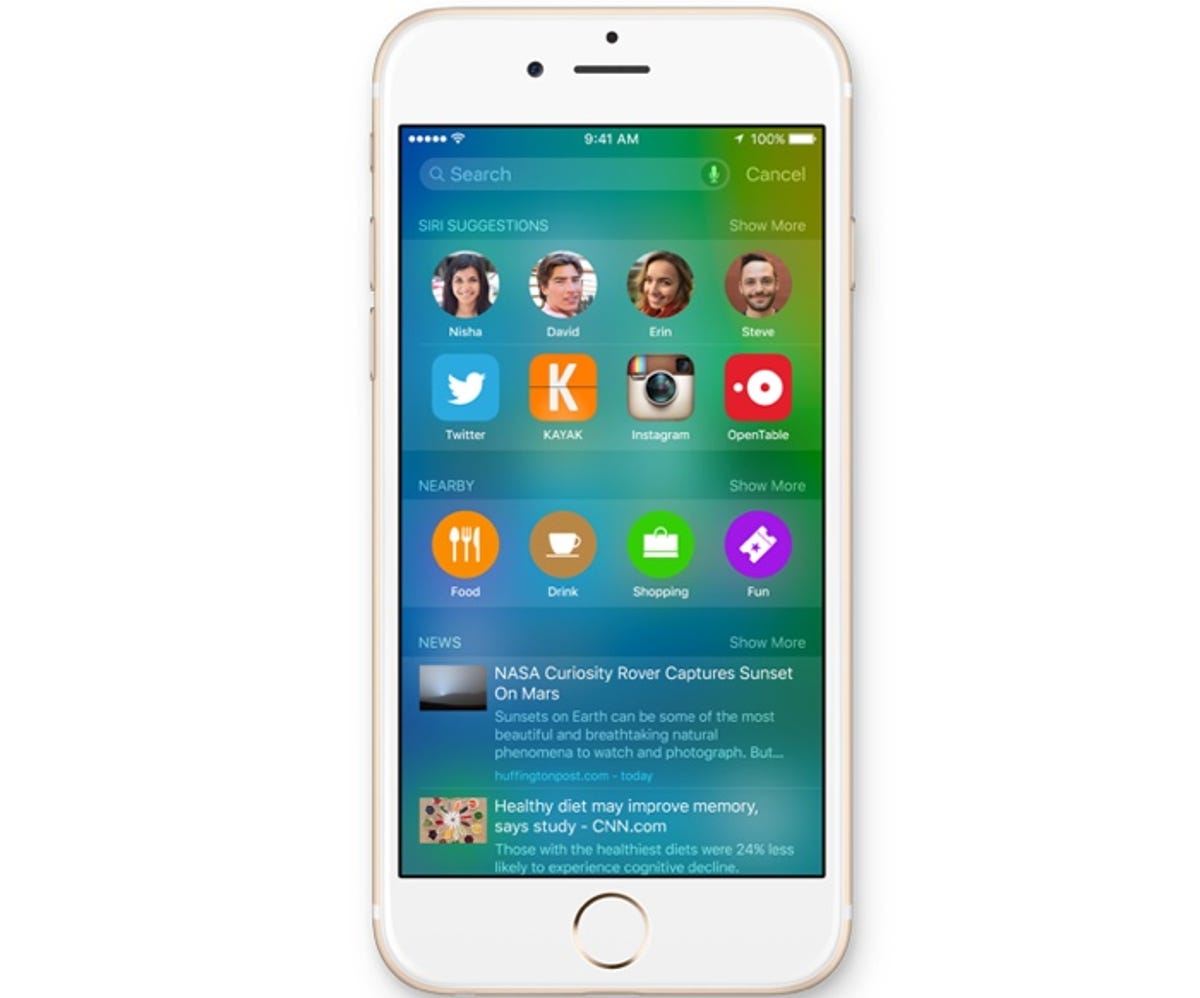

Apple
In Google Now on Tap, the suggestions feature will dish up relevant actions or details pertaining to what’s on the screen. That could equate to presenting buttons for sharing a story through social media (I called this “sharing shortcuts” in the chart above), or creating a reservation if an email mentions a restaurant.
Google Now will also offer to set a reminder, and link to a Wikipedia entry on an actor or event. Since Google aims to be dynamic and context-aware, what you can do with Now on Tap totally depends on what you are doing.
Like Siri, Google Now also has its own unique tricks, like flagging gas stations as you return the rental car to the airport (Google already knows your flight, your car rental confirmation and your location), or recommending information and services if you change locations (e.g., weather information and a link to Uber if you need a ride).
In your business
Both Siri for iOS 9 and Google Now for Android M pack in specific scenarios for ways to preemptively lend a hand. But for me, the takeaway is this: to really make your life easier, these concierge services have to dig deep into your personal life — your schedule, your contacts, your habits. To be truly useful, they must also learn and adapt over time.
The level of intimacy required to “get” you is a trade-off in privacy. Even helpful suggestions reflect the fact that Google and Apple already know so much about our daily lives. Both companies will need to address privacy issues, or else scare away concerned users.
Personally, I’m excited to pit the two against each other to see, but it’s a showdown that in reality must wait until fall when the two launch in their fully grown forms. For now, matching up features will have to do.
Check Also
8 New Google Products We Expect to See This Year
Google’s device line could end up having a particularly important moment in 2023. The company …
Next
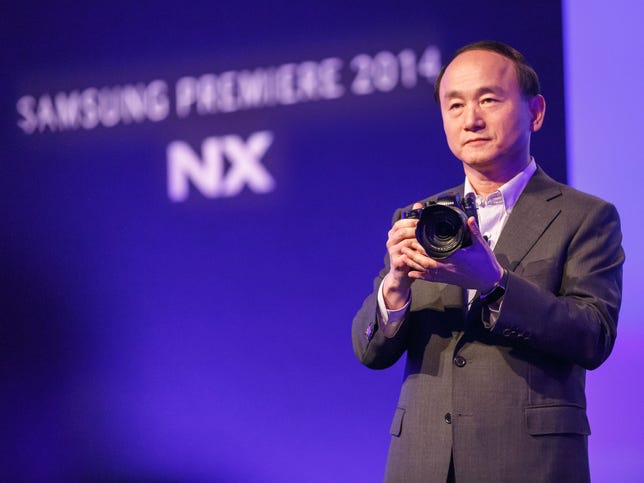
Stephen Shankland/CNET
Maybe you won’t be watching that 4K streaming movie, shooting that 4K video or buying that 4K TV as soon as you thought or at the price you expected.
That’s because of a setback that struck the transition to high-resolution 4K video Thursday when a new patent-licensing group called HEVC Advance revealed surprise plans to license patents for video compression technology.
“I don’t see how it can’t raise the price,” said Jan Ozer, a video technology author and consultant at Streaming Learning Center. And the absence of licensing terms from the new group for a few months likely will delay the industry’s adoption plans, he added.
TV makers and video-streaming services are trying to get consumers excited about 4K video, also known as Ultra HD. It promises a sharper picture by using at least four times the pixels as mainstream HD video at a resolution of 1920×1080.
But to handle all the extra data, 4K video needs more powerful compression technology. To that end, dozens of industry players created a new compression standard called the High Efficiency Video Coding, aka HEVC or H.265. A well established group called MPEG LA announced in 2014 a mechanism to license a pool of HEVC patents for use in products like Blu-ray players, video editing software and smartphones.
Then HEVC Advance arrived Thursday with a second patent pool. That raises the prospect of new payments or patent-infringement legal risks, and that’s a potential problem for 4K enthusiasts. For example, MPEG LA eliminated streaming video license fees it charged with HEVC’s predecessor, H.264/AVC, but HEVC Advance may demand those fees.
Market confusion
“It creates confusion in the market,” especially given MPEG LA’s pool of patents from 27 different patent holders, said Frost & Sullivan analyst Dan Rayburn. “They put out a press release that scares a lot of content owners, and then won’t give any details…I’ve got content owners saying this is bad for my business.”
The news, which arrived just before the video industry descends upon Las Vegas for the annual National Association of Broadcasters conference, illustrates the difficulties of today’s patent system. Patent holders want to be paid for their innovation, but patent worries can make product development a matter for lawyers, not just engineers. And patent lawsuits are very expensive to fight.
For its part, though, HEVC Advance argues that it’s speeding things up. Some major patent holders weren’t involved with MPEG LA’s patent pool, and its license will simplify licensing. “It is clear that the marketplace is demanding an additional licensing option for HEVC essential patent owners, and HEVC Advance is meeting that need,” the group said in a statement.
Transparent licensing
HEVC Advance promises a “transparent” licensing process, but so far it isn’t sharing details except to say it’s got 500 patents it describes as essential for using HEVC, that it plans to unveil its license in the third quarter, and that expected licensors include General Electric, Technicolor, Dolby, Philips and Mitsubishi Electric.
The group’s statement suggested that some patent holders weren’t satisfied with the money they’d make through MPEG LA’s license. One of HEVC Advance’s goals is “delivering a balanced business model that supports HEVC commercialization.”
One potential winner is Google, whose VP9 video compression technology is available with no royalty payments, Ozer added. Google is pushing its VPx technology family to try to liberate online video from just the sort of patent troubles that have now cropped up around HEVC. Google uses VP9 as one option for its YouTube site.
HEVC Advance and MPEG LA aren’t detailing what led to two patent pools, an outcome that undermines MPEG LA’s attempt to offer a convenient “one-stop shop” for companies needing a license.
“To the extent other patents may be necessary or useful, parties are free to evaluate for themselves their need for a license,” MPEG LA said in a statement. It didn’t comment on why HEVC Advance’s licensors aren’t included in its patent pool.
HEVC Advance has the exact same sales pitch as MPEG LA: licensing from us is easier than hammering out licenses with several individual companies.
Check Also
The Absolute Best Horror Movies on Hulu
Looking for the perfect chiller to watch around Halloween? Hulu’s got you covered. Below is …
Next
The 2014 line of Samsung Galaxy Tabs could dual-boot Android and Windows RT, according to a new report.
Related stories
- Microsoft trying to win HTC back to Windows Phone: report
- Windows Phone gains ground in Europe
- Sprint sells 7-inch Galaxy Tab 3 for $50. For real
- Samsung to release a 12-inch tablet, says Korea report
Microsoft allegedly asked both Samsung and Huawei to consider loading the OS onto Android tablets and smartphones as a dual-boot option.
Samsung has reportedly begun development on a 12-inch tablet with a very high-definition display; those who claim to have spent time with the device say it works quite well.
The news comes quickly on the heels that HTC may also be considering integrating Windows Phone into future smartphones alongside Android. Microsoft, obviously desperate to expand its mobile market share, is said to be dangling a carrot that waives licensing fees and includes compensation.
If the rumor of a dual-boot Samsung Galaxy Tab sounds like a reach, consider the original source (Hint: translate from Russian and search for the heading “Masterstroke Microsoft to increase sales Windows Phone / Windows RT”).
Tech writer Eldar Murtazin’s name has popped up on more than one occasion as being credible. He was, for instance, one of the first to break the news of the new Nvidia reference tablet. On the other hand, not every “leak” is viable, and not every source is correct (Murtazin also incorrectly reported plans connecting Windows Phone and Windows RT in Windows 9).
In other words, hold tight while we wait to see what happens.
Check Also
8 New Google Products We Expect to See This Year
Google’s device line could end up having a particularly important moment in 2023. The company …
Next
NEW YORK — Microsoft on Monday unveiled an update to its Surface tablets, both the full-Windows Surface Pro 2 and the stripped-down Surface 2.
Surface tablets are Microsoft’s own take on the burgeoning niche — one that is largely dominated by Apple’s iPad, but with a healthy dose of competition from devices using Google’s Android OS. Microsoft, not wanting to miss out on the tablet gravy train, opted to push Windows 8 and Windows RT through its own products. While Microsoft’s first attempt last year led to disappointing results, the company is trying again with improved internal specs.
The Surface Pro 2 is a full laptop in a tablet design, said Panos Panay, the Microsoft vice president in charge of Surface, who noted that the graphics performance is 50 percent better and its battery life 20 percent longer than its predecessor. It includes a tweaked “dual-position kickstand” that allows users to tilt the screen at two different angles.
The Surface 2 is the successor to the original Surface RT, which runs a stripped down version of Windows 8. The company said it is lighter, thinner, and faster.
Hands on with the Microsoft Surface 2 (pictures)






The RT version contains a Tegra 4 chip from Nvidia, as CNET previously reported. It also features a full HD 1080p screen and runs three to four times faster than its predecessor. At the same time, battery life is 25 percent better than the first Surface.
“This is the fastest product I have used relative to a personal tablet,” Panay said. “This product is faster in every single way. … You’re using this thing at speeds that are unprecedented.”
As for the accessories, Microsoft also showed off a new back-lit, snap-on keyboard, the Power Cover, as well as a thinner Type Cover, and a dock for the tablet.
The 32GB Surface 2, which runs Windows RT, will retail for $449, $50 less than its predecessor. A 64GB will cost $549. The Pro version, meanwhile, starts at $899 for the 64GB version. Both tablets will be available for preorder at 8 a.m. ET on Tuesday and will arrive in stores on Oct. 22.
Microsoft launched the new tablets during a press event Monday in the Skylight Modern event space in New York’s Chelsea neighborhood.
Related stories:
- Follow CNET’s live coverage of Microsoft’s Surface 2 event
- Microsoft Surface 2 debut: Pricing, specs, and other info
- How Microsoft became a control freak with tablet makers
- Nvidia CEO: We’re working hard on Surface 2
Sales of Microsoft’s first Surface tablets — the Pro with an Intel chip and RT with an Nvidia processor — have been dismal. Microsoft had to write down $900 million for Surface RT in July, and the software giant later revealed it hadgenerated only $853 million in revenue from Surface RT and Surface Pro since their debut last fall.
As of the second quarter, Windows 8 and Windows RT devices comprised just 4.5 percent of all tablet shipments, according to IDC. The operating system only launched in October, however, and the tech research firm said that “Microsoft-fueled products are starting to make notable progress into the market.”
Panay noted that Surface Pro 2 features Intel’s latest processor, dubbed Haswell. That makes the tablet faster than 90 percent of laptops on the market today and 20 percent faster than its predecessor. Surface Pro 2 also has 75 percent better battery life than the first version of Surface Pro.
Microsoft said the power cover gives the Pro 2 two-and-one-half times the battery life of the original product. The type cover, meanwhile, is now almost as thin as the original touch cover.
“The point of this product is to work fast,” Panay said. “The need of the product is to work all the time. We couldn’t miss either of those.”
The Surface Pro 2 screen also includes a 46 percent improvement in color accuracy.
The Windows app store now has 100,000 apps versus 10,000 when the first version of Surface launched. Surface 2 also now includes the full Office suite with Outlook, unlike its predecessor.
Microsoft Surface and Surface Pro 2 accessories (pictures)






Updated throughout the event with details and again at 2:30 p.m. PT with pricing and availability.
Check Also
8 New Google Products We Expect to See This Year
Google’s device line could end up having a particularly important moment in 2023. The company …
Next
A new report apparently confirms early speculation that Google may tap Asus as the hardware maker for the next generation Nexus 10 tablet.
Although much of the Nexus buzz currently centers around predicting the LG Nexus 4 successor, we should also remember that the Nexus 10 is also due for a refresh. While Samsung was once thought as a shoo-in for the title, it’s possible that Google may have given the task to Asus.
Related stories
- Nexus 5 due in October with Android 4.4 KitKat, says report
- Nexus 10 tablet reportedly will be made by Asus
- Verizon: Google Nexus 7 LTE support is coming. Really
According to a new leak from PC World UK’s internal inventory system, which was tweeted via tipster @Rage06, the “Google Asus Nexus 10” should cost £349. When adjusted for the exchange rate the tablet equates to roughly $563, or considerably higher than the current model’s asking price. It isn’t clear whether this listing is for a 16GB or 32GB model though it’s a good bet to expect the latter.
As to the legitimacy of this leak, the source claims that devices are not shown in the database unless they are “100 percent.”
Both the Nexus 5 handset and Android 4.4 KitKat OS are rumored to make their debut in mid-October; it’s plausible that the Nexus 10 shows up at the same time as well.
Check Also
The M2 MacBook Air Is the Ultimate Laptop Gift
This story is part of 84 Days of Holiday, a collection that helps you find …
Next
Earlier this year I wrote a blog post comparing older running games to new ones, to see how the genre that works so well on the touch screen was evolving. But even since then running games have gotten much deeper, with more 3D entries than just the popular classic Temple Run (iOS|Android).
I’m a big fan of these types of games because they’re so easy to pick up and play for a short time and I’m never too worried about turning them off when it’s my turn at the DMV or my bus has reached my stop — there’s always another run.
This week’s collection of iOS apps (the first one of which is also available on Android) is all about 3D running games. The first lets you ride a mine cart as you explore a dangerous obstacle-filled mine. The second lets you use your jetpack to fly through the air while avoiding enemy fire. In the third, you run in a futuristic world where you’ll use the floor, walls, and ceiling to go for the greatest distance. Obviously, these games haven’t been updated for the iPhone 5’s larger screen, but hopefully that will happen soon.
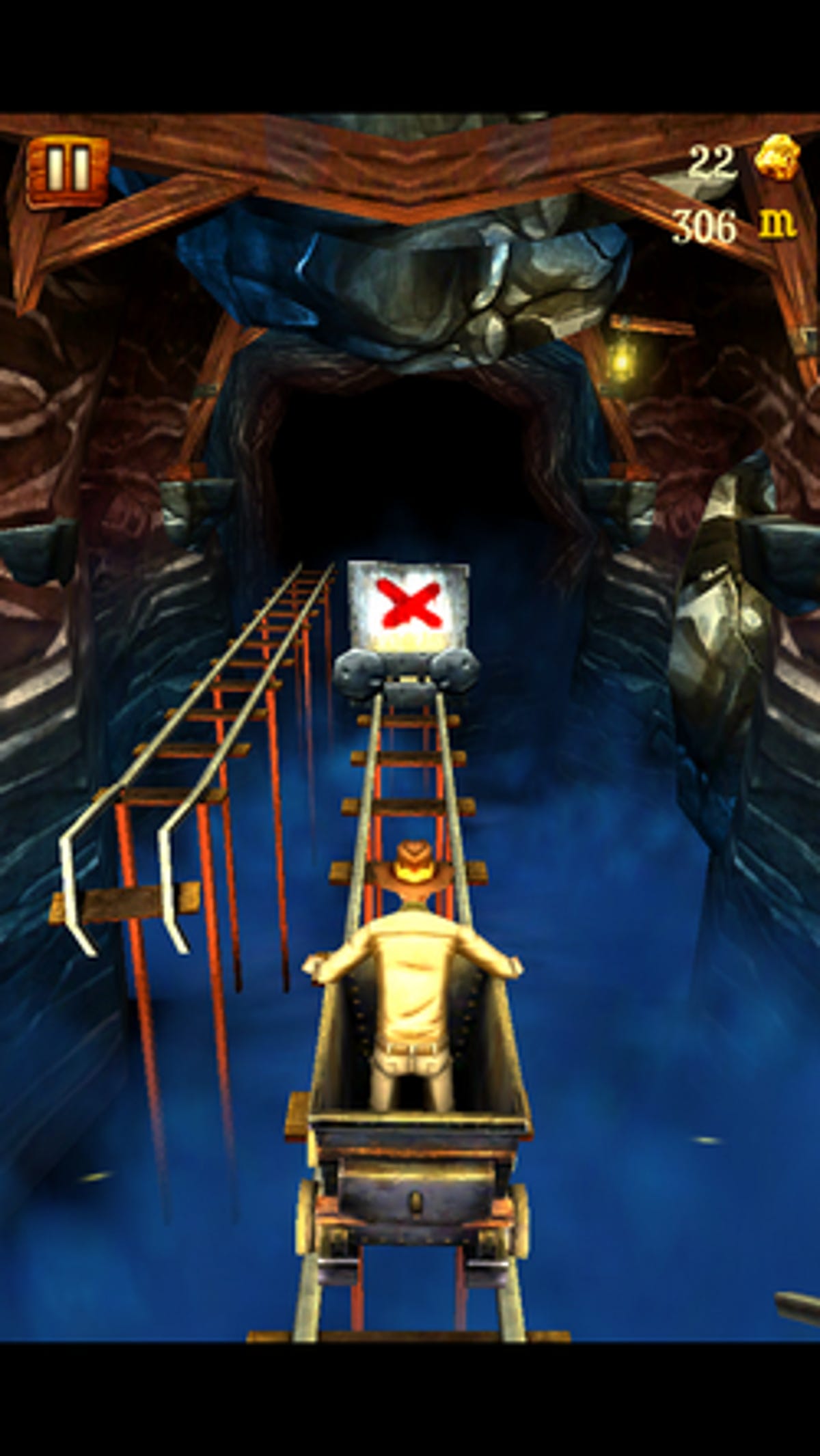

Screenshot by Jason Parker/CNET
Rail Rush (99 cents for iOS or Android) is a 3D endless-escape game, but instead of running on a path, you ride a mine cart through dangerous mines and have the inexplicable ability to bunny-hop your heavy mine cart from track to track.
The game starts you off easy, as you’ll travel relatively slowly down the track. But your mine cart quickly picks up speed as you tilt to lean your cart and grab gold nuggets, and swipe horizontally to switch tracks as obstacles get in the way or your track simply ends. There are also barricades on tracks that you’ll need to swipe up to jump over, and other obstacles that require you to swipe down to duck. As your mine cart starts moving faster, the obstacles come at a feverish speed and I often found myself swiping one too many times or tilting when I should have swiped. With all its swipes and tilts, Rail Rush gets chaotic very quickly.
Leaning to grab nuggets is important because you can use them to buy upgrades for your cart and defensive add-ons that let you make extra mistakes without dying. Cart items include upgrades like the Wood Ram, which adds a ram to the front of your mining cart to bust through obstacles. You also can buy left or right spikes to bust through objects that are placed on one rail of the track, which usually force you to lean to get around them. Other extras you can buy include items like a stick of TNT that you can throw to clear away obstacles for a limited distance in front of you. There are higher tiers for each of these types of items and they’ll definitely come in handy when you’re going for big distances.
As in the other games in this collection, you have can buy characters that have their own skills to offer on your run. New characters are expensive, so it’s going to take a lot of rides to earn enough nuggets. And as in most games these days you can buy more nuggets for real money if you want to get an advantage with extra upgrades.
Rail Rush is a great time-waster, but it takes fast reactions if you want to go the distance. If you’re looking for a real test for your hand-eye coordination, check out this game.
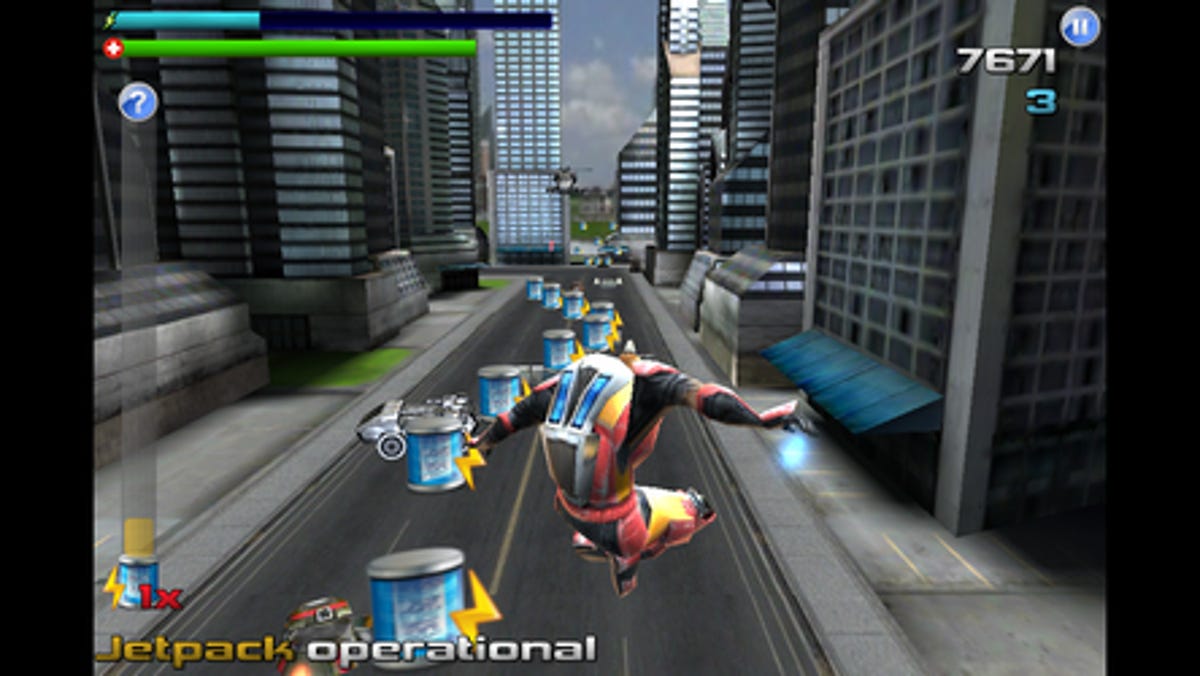

Screenshot by Jason Parker/CNET
Jetpack Junkie (99 cents) is another 3D runner, but lets you use a jetpack to blast into the air while you avoid a continuous onslaught of shooting enemies and obstacles.
Taking a page from the mega-hit game Jetpack Joyride (iOS|Android), Jetpack Junkie gives you the ability to run on the ground or fly into the air for a limited time. The amount of time you can stay in the air depends on your current jetpack power, but there are many batteries to be found for a quick boost of energy. The only problem is while batteries are plentiful, so are bullets and missles flying at you from the game’s many enemies, as tanks, mounted guns, heat-seeking missiles, and laser-blasting aircraft are constantly en route. If the endless bullets aren’t enough to take you down, the game’s fixed obstacles have a way of sneaking up on you. While playing this 3D runner I was reminded of “bullet hell” shooting games given how much time I spent avoiding bullets, but in great-looking 3D.
As you progress, you’ll also pick up coins that you can spend on upgrades in the Loadout page or on new character models (runners) between runs. In Loadout, each of the upgrades has five tiers and costs more with each additional tier. You can add to your overall life, get a HealBot for constant health regeneration, make your jetpack’s batteries last longer, pull coins toward you with the Magnet, or add more power to defensive shields. As for Runners, you get a free in-game download to see your options, and each costs a lot of coins with different skill sets for each runner. It won’t take too long to earn enough for your first regular upgrade, but it will take a lot of runs to really maximize your runner’s skills for the serious long-distance scores, and even longer to get a new look.
Like Rail Rush, Jetpack Junkie has an in-game store if you want to buy stacks of coins for real-world cash. The emerging theme I’m noticing is these games all like to make you spend some cash to get that early upgrade, when doing it the hard way will take a lot of playing time. I suppose it will work on some, but I had plenty of fun without spending any extra money.
I have one tip that will help you early on: when you turn a corner onto another street, make sure you engage your jetpack for a little altitude. Jetpack Junkie has a way of putting obstacles right after turns, and if you’re not careful, they’ll eat away at your health quickly.
Jetpack Junkie is a great way to kill some time, but it’s definitely not easy. If you want a serious challenge in your 3D runner, this is the game to get.
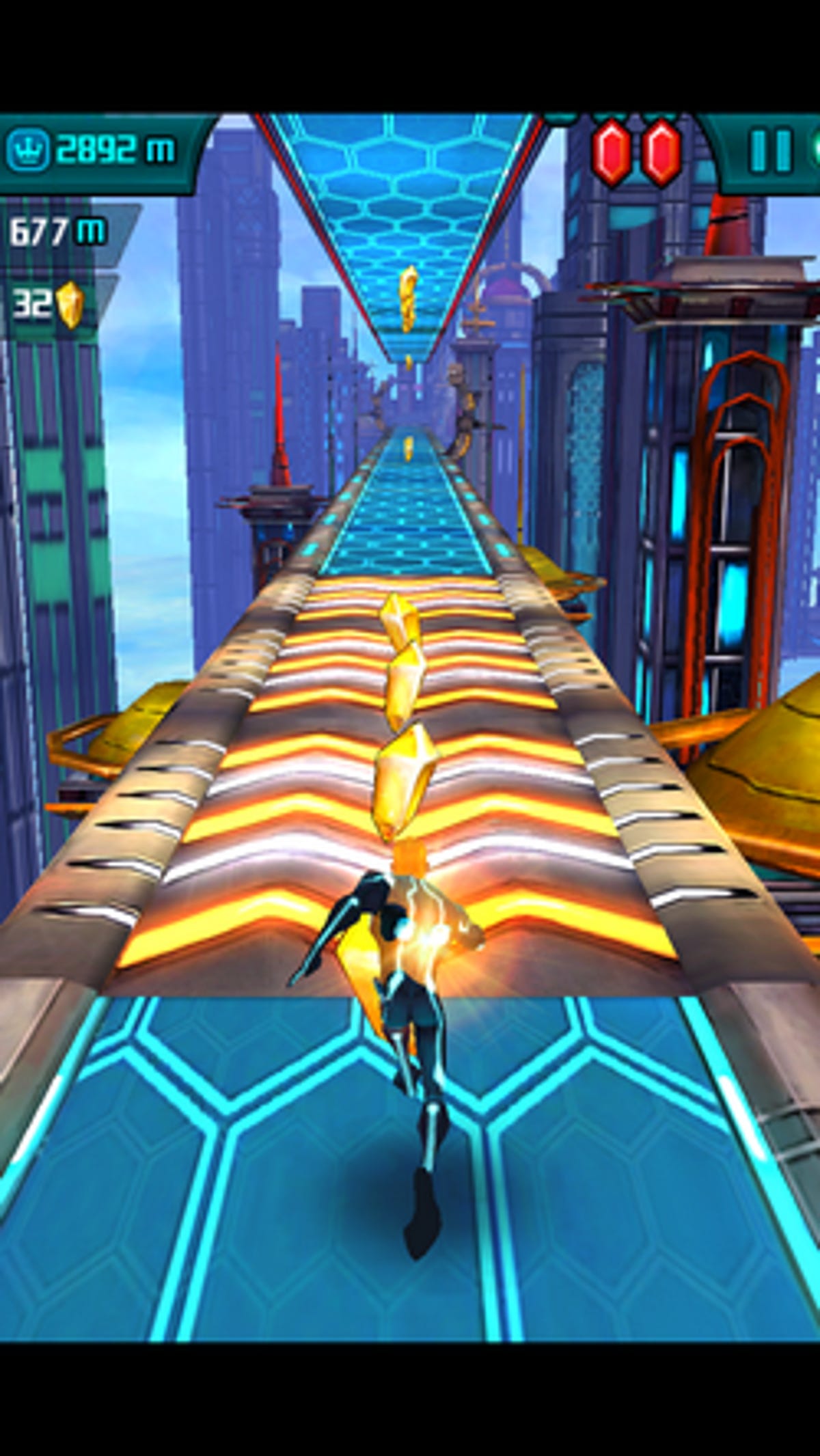

Screenshot by Jason Parker/CNET
Amazing Runner (99 cents) is a 3D running game that offers a little something more than your average 3D runner by letting you run on all sides of the screen, but it has one major problem.
Made with the Unreal 3 Engine, Amazing Runner looks fantastic as you run on futuristic-looking roads suspended high in the air flanked by neon high-rises. As you run, you can tilt your device from side to side to move around on the road. You won’t just run on one path in Amazing Runner either. You can swipe sideways to run on walls, upward to run on the ceiling, and in a circular motion to run through corkscrews. You also can tap on the screen to attack evil robots that block your path.
As is the case in all of these games, you’ll need to collect coins as you run that you can spend on upgrades, temporary power-ups, and new characters in between runs. Some power-ups will give you a boost while others will do things like suck coins toward you with magnets. You also have the option to buy coins with real money if you want to maximize your loadout or pay for expensive new looks by changing characters. It’s not just the characters either, everything is priced pretty high and it’s clear that the game is set up to part you from your money, but you still always have the option of earning things the hard way. It’s just going to take a lot of runs.
Amazing Runner is a beautiful, fast-paced, and challenging game that offers enough new ideas to make it one of the more unusual runners in the genre, but I found one major problem. In testing on both my iPad and my iPhone I noticed a huge bug on the iPhone where swiping in circles through corkscrews simply doesn’t work. I tried several times and fell every time while going through a corkscrew. On my iPad, I could navigate a corkscrew without any problems, so I’m hoping this is something the developers can easily fix. As is, I can’t currently recommend this game for iPhone users until there is a fix.
If you like running games, Amazing Runner uses every side of the screen, adding to the challenge of simply going the greatest distance. If you’re an iPhone owner, hold off on downloading this game until the developers can provide a fix for corkscrews or you are going to be one frustrated runner.
Check Also
8 New Google Products We Expect to See This Year
Google’s device line could end up having a particularly important moment in 2023. The company …
Next
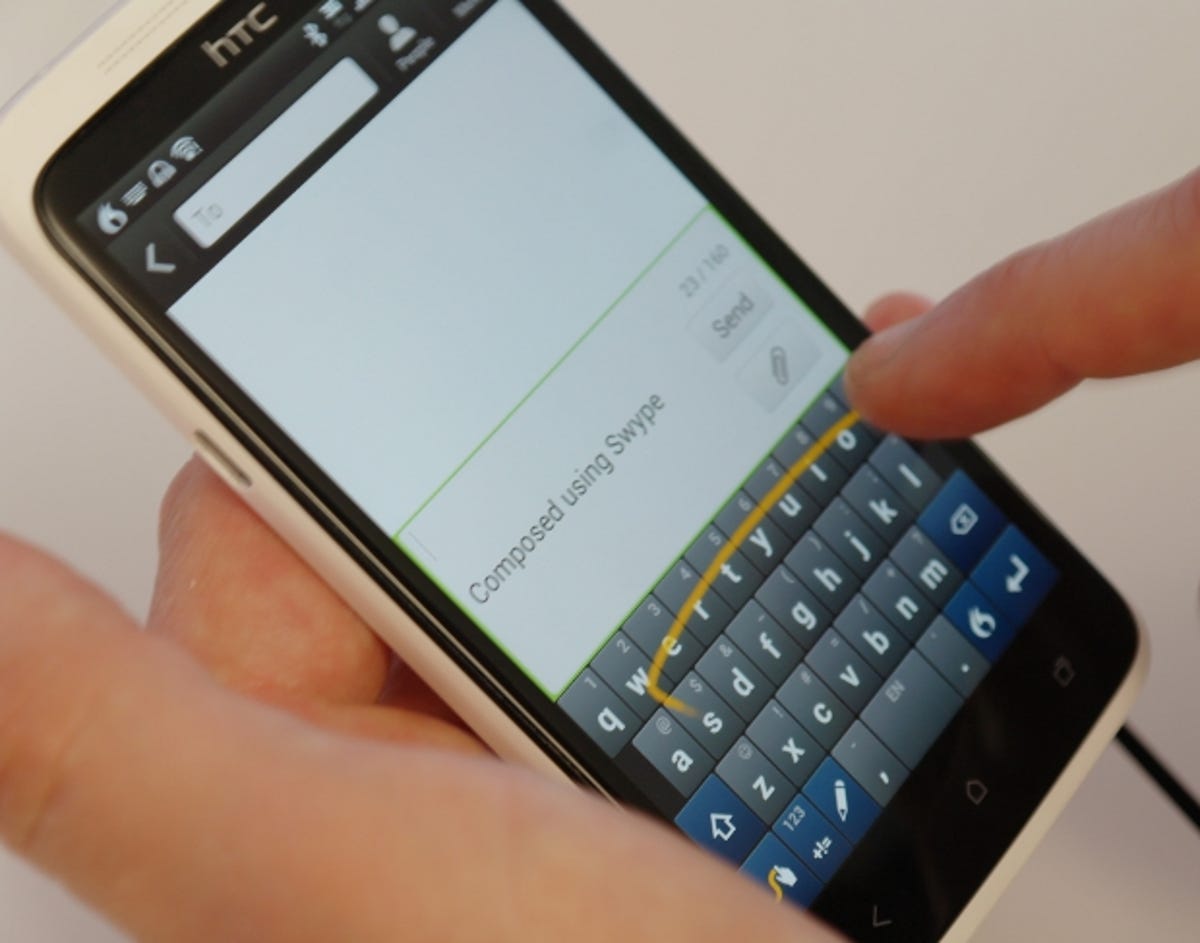
Swype is growing up and it wants to get to know you better.
Many Android fans will already be familiar with the nifty Swype keyboard — which lets you drag your finger over letters to form words, rather than hen pecking each individual letter.
Swype comes preloaded on around 200 million phones now — scores of Android phones and some Symbian and MeeGo devices, either as the full Swype keyboard, or in the form of underlying tech powering a maker-tweaked Swype-style keyboard.
The technology is owned by Nuance, which also recently acquired Vlingo, the Android voice-assistant technology. Nuance’s voice smarts are also licensed by Apple for its robo-concierge Siri.
So what can Swype fans expect in the next iteration of the fantastic finger-dragging keyboard?
Firstly, better next-word prediction — new Swype will learn your lingo and peruse your word history so it can better predict whatever you’re typing next, according to Nuance tech architect John West, who demoed the software in a briefing with CNET UK.
Always signing off an email with the world’s most patronising phrase, ‘thanks in advance’? Swype ‘thanks’ and — after a small getting to know you period — the cunning keyboard will suggest you follow this with ‘in’ and then ‘advance’ so you don’t even have to Swype the other two words. Almost like it’s patronising you.
If you like to make up your own slang, new Swype has your back there too as you can add custom words to a personalised dictionary — which can be edited to jettison slang that’s no longer the shizzle.
New Swype also wants you to talk to it — for this it’s leaning on Nuance’s natural language processing and voice-recognition skills.
When you add a word to your dictionary, the software sends it off to the cloud and adds it to the individual verbal arsenal it’s building on you. So, in time, you’ll be able to successfully dictate the word ‘vajazzlified’ as well as Swyping it, should you really want to weird out everyone in your immediate vicinity.
To use dictation on the new Swype keyboard you tap the dictation key — the blue square with the white flame symbol on it at the bottom of the keyboard (shown running on an HTC One X in the photo above) — then speak your sentence to the phone, which sends your noise off to its cloud-based language processing machinery and then slots the transcribed text back in your message.
The dictation engine is learning, says West — with only around 300,000 words in the English language system currently. But the more people use Swype, the more words will be added to the system to improve it, he says.
Tablet device users will also be able to resize the new Swype keyboard to make it a more suitable size for finger-dragging action on their slate. This not only means Swyping on tablets will speed up, says West, but the resized keyboard can also be positioned wherever you fancy.
Other tweaks include language downloads so you can change the language you’re Swyping in to one of more than 55 supported lingos, improved one-handed Swyping, and tweaks to Nuance’s touch-typing algorithms for those who do want to henpeck letters to make words.
New Swype will also check out your social network accounts and email to harvest the names of your buddies to help it work out who you’re talking about in your texts and emails.
Nuance hopes the all-new Swype software will arrive in phones hitting the shops before Christmas.
Are you a Swype lover or do you prefer tip-tapping on individual keys? Type your views in the comments below or swipe on over to our Facebook page.
Check Also
8 New Google Products We Expect to See This Year
Google’s device line could end up having a particularly important moment in 2023. The company …
Next

Bonnie Cha/CNET
BARCELONA, Spain–As promised, Samsung unveiled its next-generation Galaxy S smartphone at Mobile World Congress 2011 today.
Dubbed the Samsung Galaxy S II, the handset improves on its predecessor in a number of ways. First, you’ve got the addition of a dual-core processor. We were originally told by the company that it was using Nvidia’s Tegra 2 chipset but were later informed that it was Samsung’s own chip; unfortunately, further details were not provided at the event but generally speaking you should see faster performance and graphics.
It also runs the latest Android 2.3 Gingerbread, but unlike the Nexus S, the Galaxy S II will feature Samsung’s custom TouchWiz user interface.
Given the delay with updates being pushed out to the current Galaxy S portfolio, we’re sure this news will make some groan. However, TouchWiz 4.0 offers added functionality, including the three new hubs–Game, Music, and Reader–so users can download more content to their smartphones. The Games hub will be powered by Gameloft, and the Music hub will be run by 7Digital. The Reader hub will come from different providers and includes access to 2.2 million books, 2,000 global and local newspapers, and 2,300 magazines.
You’ll still get your social-networking feeds through the Social hub (now Social Hub Premium), but you’ll also be able to see your communications history, IM status, and reach your contacts via SMS, e-mail, etc., all from one place.
Though there’s a social and multimedia aspect to the device, Samsung has also worked to make it a more business-friendly smartphone. As a result, the Galaxy S II includes on-device encryption and support for Cisco’s mobile solutions for VoIP calls, VPN, and virtual desktop.
Design-wise, the Galaxy S II features a 4.3-inch Super AMOLED Plus touch screen with a WVGA 480×800-pixel resolution. Samsung’s Super AMOLED screens already provided one of the richest viewing experiences on a smartphone, but the Super AMOLED Plus adds 50 percent more subpixels, and we certainly noticed a crisper, smoother picture, and colors popped off the screen.
The general design is like other touch-screen smartphones we’ve seen, but Samsung loves claiming to have the world’s thinnest or smallest products, so we weren’t surprised to hear it call the Galaxy S II the “world’s thinnest smartphone.” Having seen it in person, we can say it is incredibly thin. It measures 4.93 inches tall by 2.6 inches wide by 0.33 inch thick and weighs 4.09 ounces.
Like the previous generation, the Galaxy S II has a plastic build, but Samsung added a textured back, so at least the smartphone doesn’t feel as slick this time around. You can get a closer look at the device in our hands-on photo gallery below.
Other notable highlights of the Galaxy S II include an 8-megapixel camera and front-facing 2-megapixel camera, 1080p HD video recording and playback, option for NFC connectivity, HSPA+ support, Wi-Fi, and Bluetooth. Samsung says it currently has no plans for a CDMA version of the phone at this time.
The Galaxy S II is expected to ship to Europe and Asia in February, but no word on U.S. availability or pricing at this time. In addition to the Galaxy S II, Samsung also introduced the Galaxy Tab 10.1, which will debut worldwide this spring.
Samsung Galaxy S II hands-on (photos)






Check Also
8 New Google Products We Expect to See This Year
Google’s device line could end up having a particularly important moment in 2023. The company …
Next
Sony and Toshiba are reportedly negotiating a single next generation disc standard, which could spell an early end to the Blu-ray versus HD-DVD battle.
The battle of the discs has come to a halt…for the time being. According to numerous media outlets, including the Nikkei Journal, Sony and Toshiba have started negotiating a possible single next-generation disc standard that features the best aspects of both Sony’s Blu-ray and Toshiba’s HD-DVD formats. However, reports on the matter are mixed. Some media outlets are saying the negotiations have stalled, while others, including the Mainichi Daily News, say the two sides are close to a deal.
Sony and Toshiba each announced its own unique next-gen disc format in 2002, and each has been battling the other for upcoming market dominance. To date, the companies have split the market nearly down the middle. Sony’s Blu-ray format has been adopted by more than 100 companies, while 83 firms have committed to Toshiba’s HD-DVD format.
The Nikkei Journal reports both sides have acknowledged that a uniform standard is essential for market penetration. Both sides realise that two different formats could bring back the VHS-versus-Betamax wars of the early ’80s, a competition Sony lost. The Journal says Sony and Toshiba have been talking behind closed doors since February. It also reports the two sides have already contacted American media firms, such as Walt Disney and AOL Time Warner, about the acceptance of a new common disc format.
The Mainichi Daily News goes one step further, saying Sony and Toshiba “have reached an agreement and are in the final stages of deciding on a third standard”. If the two companies reach an agreement, they will co-develop a new “hybrid” standard that takes advantage of the strong points of both the Blu-ray and HD-DVD formats.
The development of a new next-generation format could impact Sony’s PlayStation 3. Sony revealed last September that its next-generation game console will use Blu-ray discs, also known as BD-ROMs. Sony hasn’t yet commented on how a compromise disc format will affect its PlayStation 3 plans.
But just because the two sides are meeting to discuss the possibility of a compromise disc format doesn’t mean any progress has been made. “There have been no major decisions or negotiation [breakthroughs] around the time of this news report,” the Journal quotes a Toshiba representative as saying. “We are continuing to discuss on a unified format that will benefit our users, but there has been no significant progress.”
Check Also
The Absolute Best Horror Movies on Hulu
Looking for the perfect chiller to watch around Halloween? Hulu’s got you covered. Below is …






